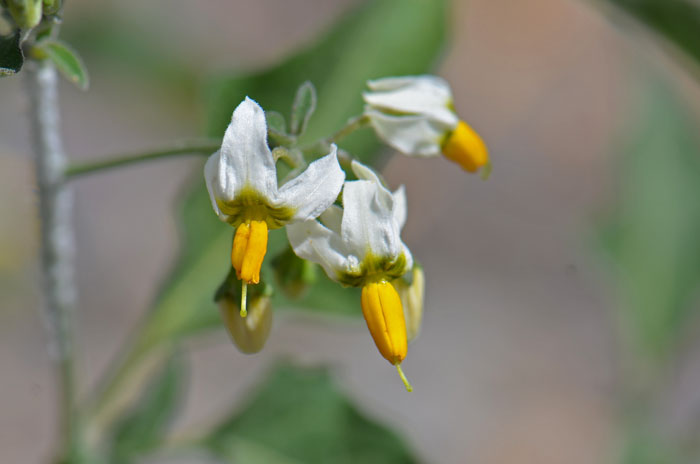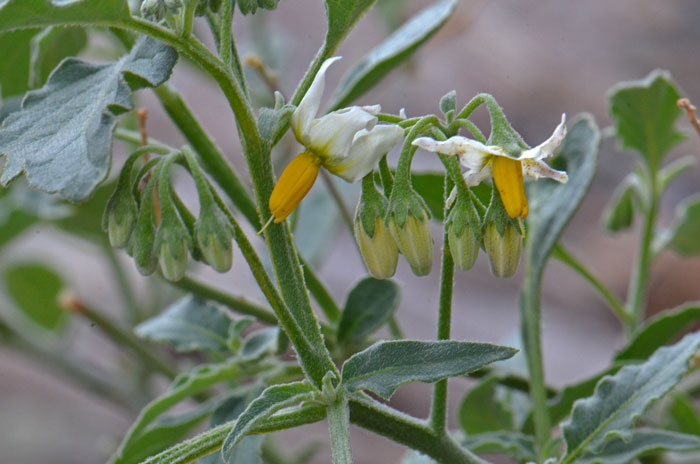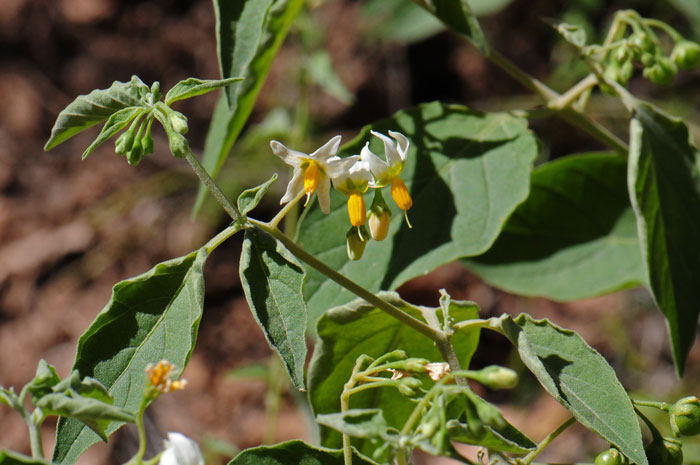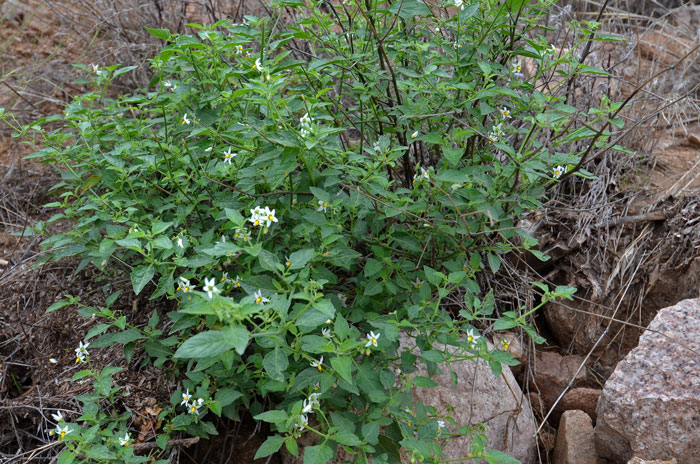Solanum americanum, American Black Nightshade




Scientific Name: Solanum americanum
Common Name: American Black Nightshade
Also Called: Apple of Sodom, Glossy Nightshade, Popolo, Purple Nightshade (Common), Smallflower Nightshade, Small-flowered Nightshade (Spanish: Chichiquelite)
Family: Solanaceae, Nightshade or Potato Family
Synonyms: (Solanum americanum var. nodiflorum, Solanum americanum var. patulum, Solanum caribaeum, Solanum fistulosum, Solanum hermannii, Solanum inops, Solanum linnaeanum, Solanum minutibaccatum var. curtipedunculatum, Solanum nigrum var. americanum, Solanum nigrum var. virginicum, Solanum nodiflorum, Solanum nodiflorum var. puberulum, Solanum parviflorum, Solanum photeinocarpum, Solanum sodomeum)
Status: Native
Duration: Annual, perennial
Size: Up to 3½ feet, usually much less.
Growth Form: Forb/herb, subshrub;plants glabrous or short hairs.
Leaves: Green; thin; alternate, or sub-opposite; leaves variable - may be up to 4 inches; ovate to lance-elliptic; margins entire to coarsely wavy-toothed.
Flower Color: White or whitish-purple, yellow stamens; flowers actinomorphic; inflorescence an umbel-like racemes; fruit a sub-globose or globular shiny black berry.
Flowering Season: January to December; April to November in California; June to November in Texas.
Elevation: 200 to 6,000 feet; up to 3,000 feet in California.
Habitat Preferences: Agricultural areas, waste places, often open disturbed places. and riparian areas.
Recorded Range: is found along the southern and western coastal states and inland as follows: AL, AZ, CA, FL, GA, LA, MS, NM, NV, OR, TX, WA and Hawaii. It is also native to Baja California, Central and Northern Mexico. in Arizona it is found throughout much of the state with few or no records in Apache, Graham, La Paz and Pima, counties.
North America & US County Distribution Map for Solanum americanum.
U.S. Weed Information: In North America Solanum americanum can be weedy or invasive according to the following authoritative sources: Southern Weed Science Society. 1998. Weeds of the United States and Canada. Plants included here may become weedy or invasive.
Invasive/Noxious Weed Information: No information available.
Wetland Indicator: In North America Solanum americanum has the following wetland designations: Arid West, FACU; Atlantic and Gulf Coastal Plain, FACU; Eastern Mountains and Piedmont, FACU; Great Plains, FACU; Midwest, FACU; Western Mountains, Valleys, and Coast, FACU.
FACU = Facultative Upland, usually occur in non-wetlands, but may occur in wetlands
Threatened/Endangered Information: No information available.
In the Southwestern United States, Arizona there are 18 species of Solanum, in California there are 30 species, Nevada has 8 species, New Mexico has 16 species, Texas has 27 species, Utah has 11 species. All data is approximate and subject to taxonomic changes.
Comments: Solanum americanum is part of the Solanum nigrum complex, a group of "Black Nightshades" which have proven to be confusing and taxonomically difficult to sort out.
In Southwest Desert Flora also see: Silverleaf Nightshade, Solanum elaeagnifolium, Fendler's Horsenettle, Solanum fendleri, Melon Leaf Nightshade, Solanum heterodoxum, Hinds Nightshade, Solanum hindsianum, Buffalobur Nightshade, Solanum rostratum and Purple Nightshade, Solanum xanti.

